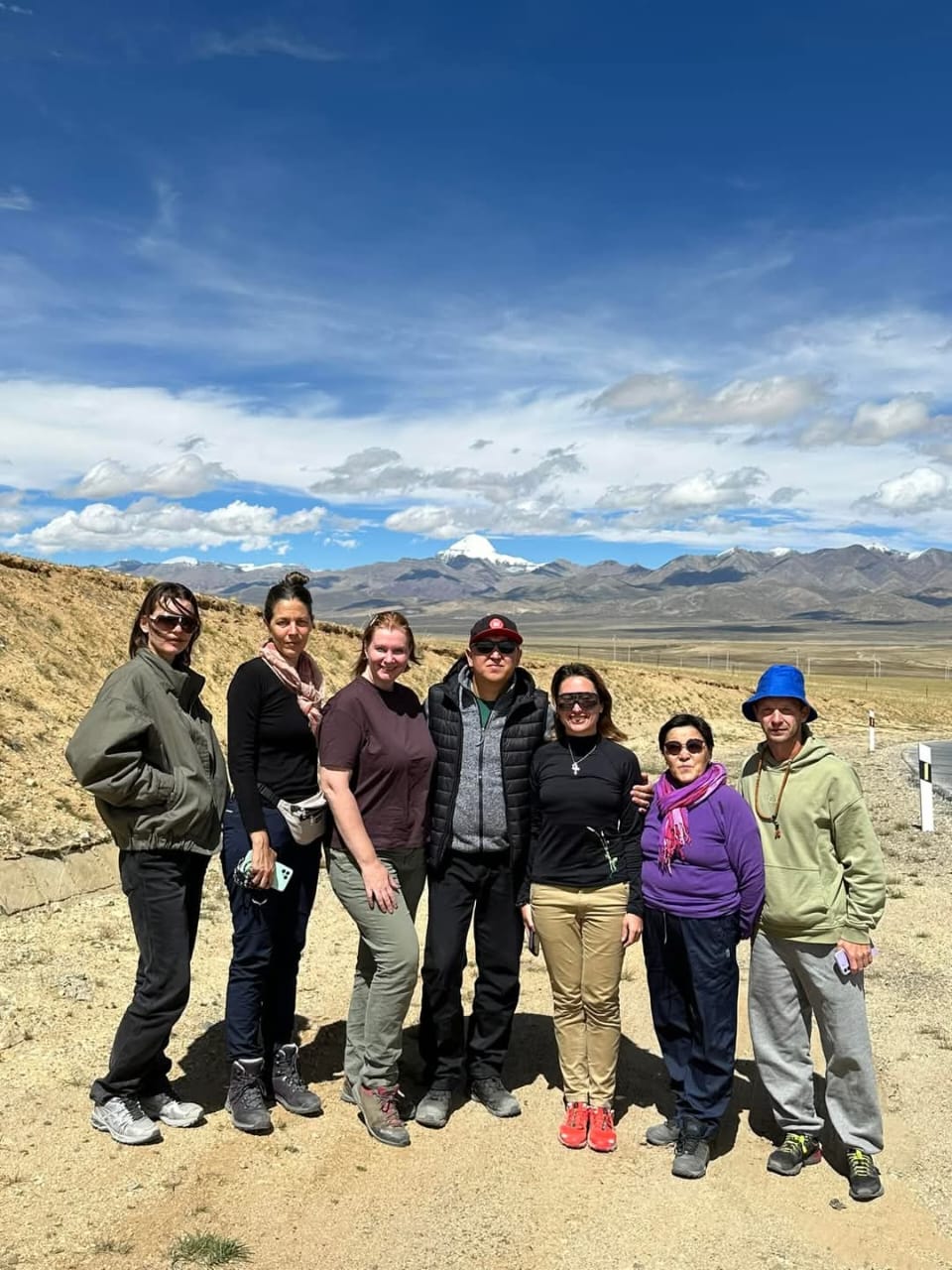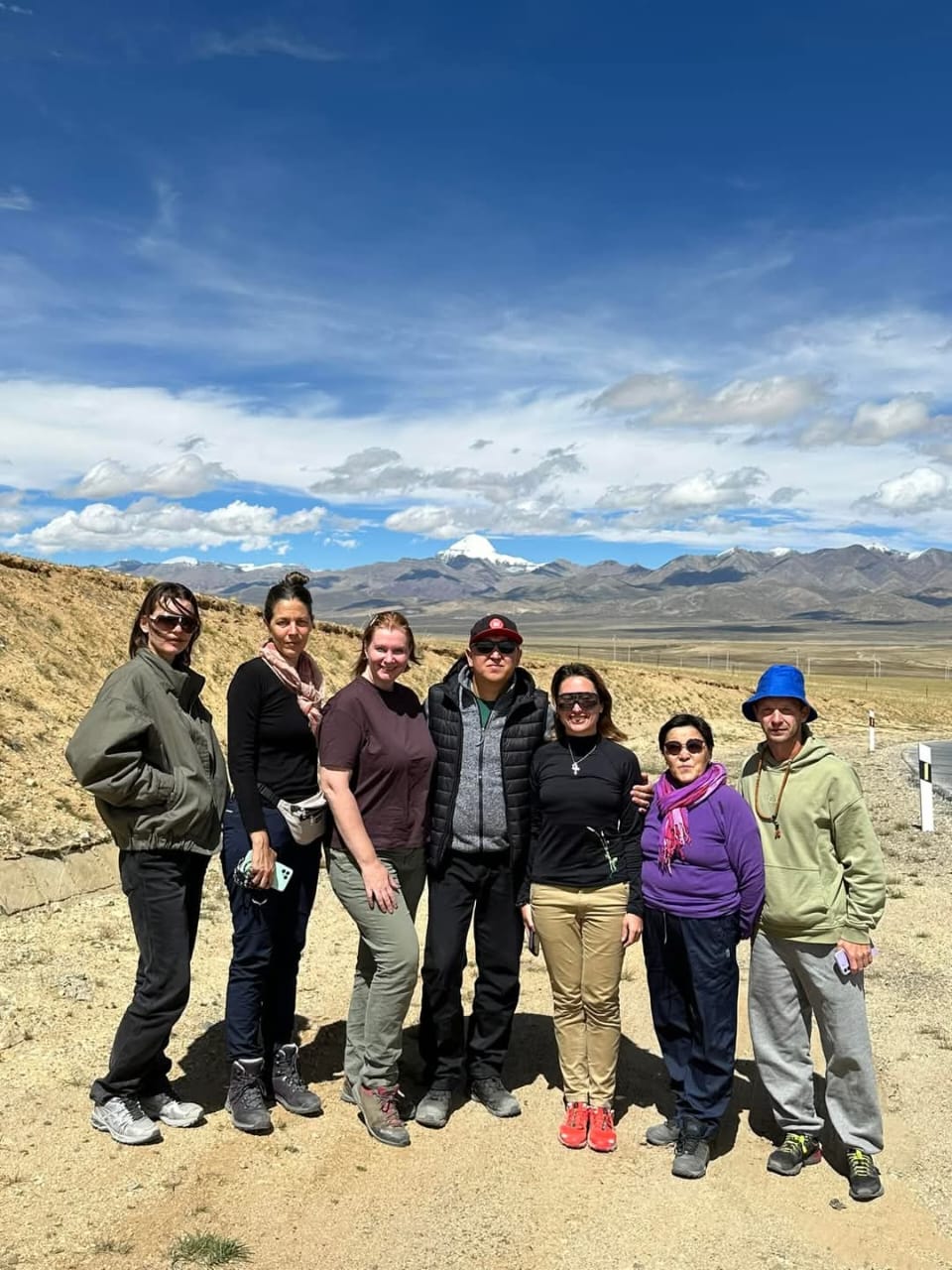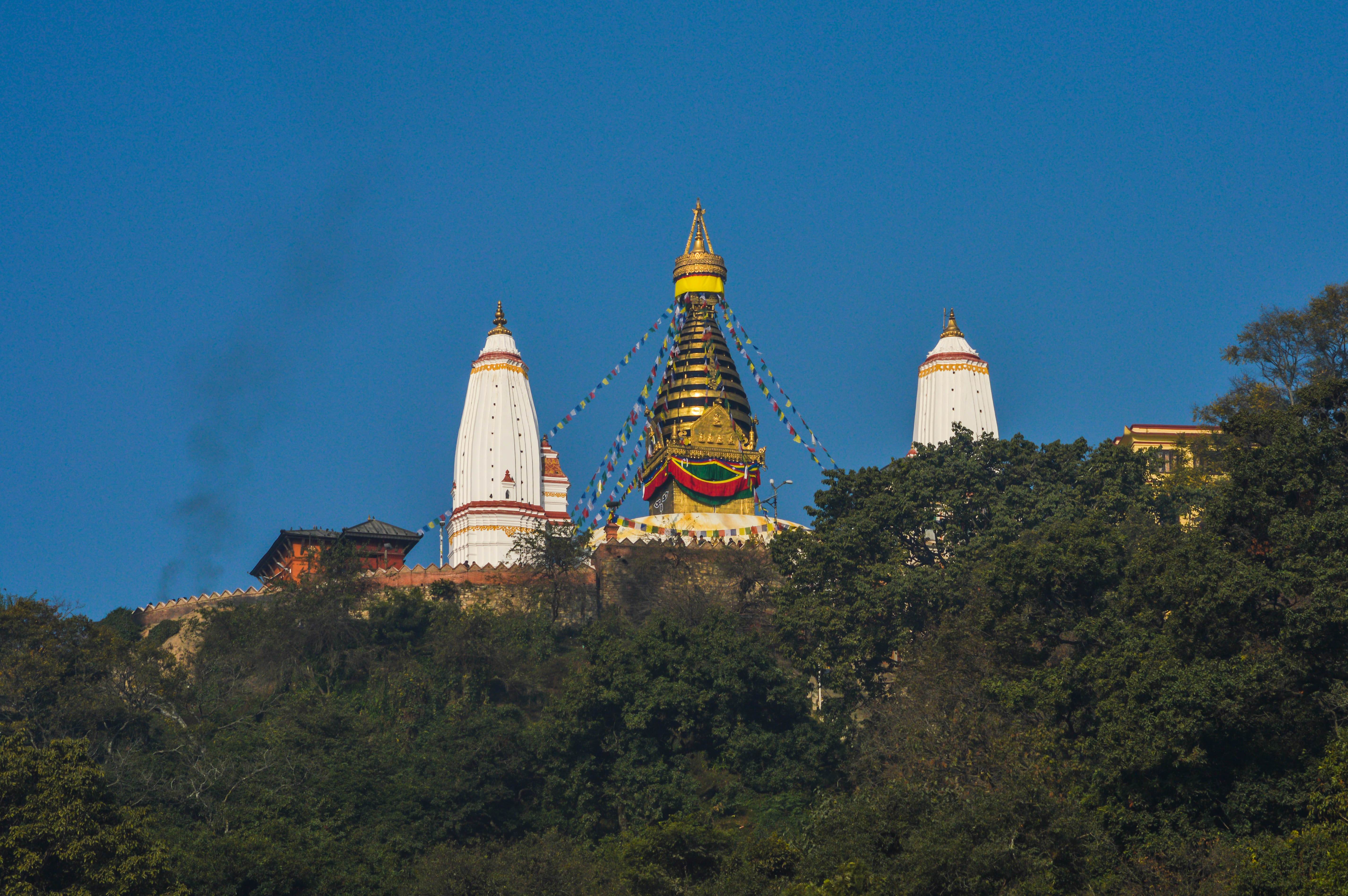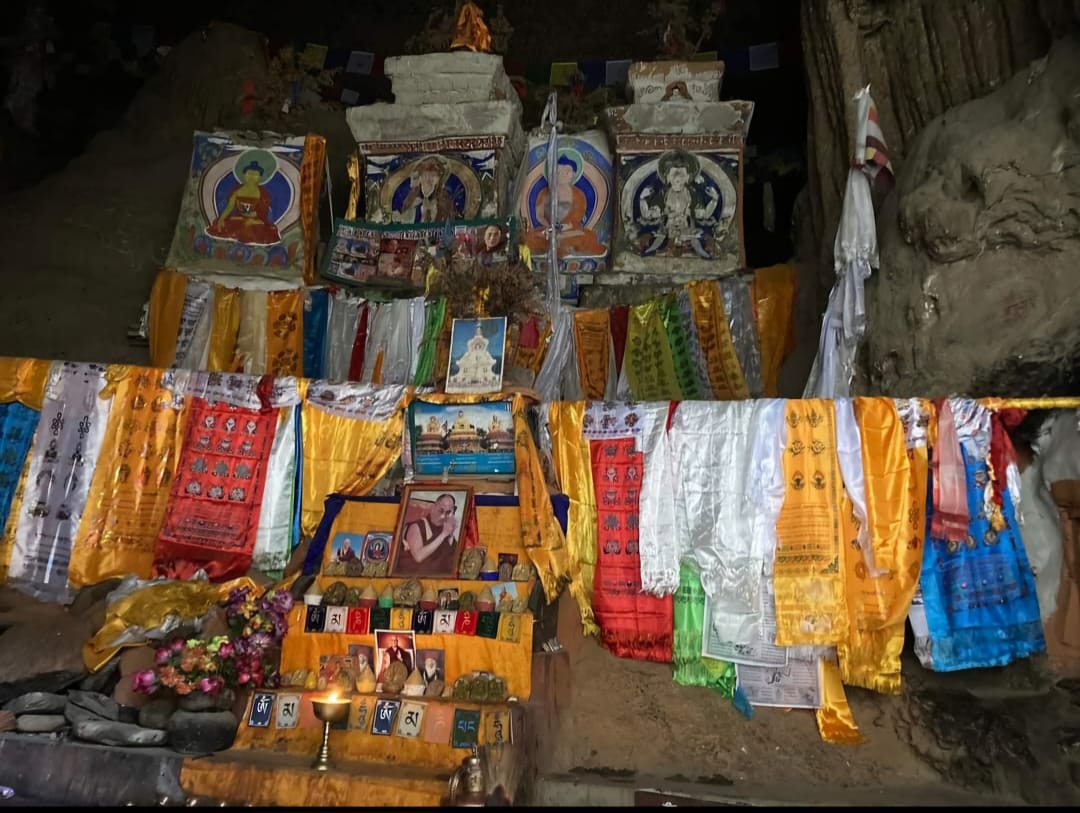Mount Kailash Introduction:
Mount Kailash, standing at 6,638 meters (21,778 feet), is one of the most revered and enigmatic peaks in the world. Located in the remote southwestern corner of Tibet, this strikingly symmetrical mountain is not only a natural wonder but also a spiritual epicenter for multiple religions. Despite its relatively modest height compared to other Himalayan giants, its cultural, religious, and mythological significance far outweighs its elevation.
Considered sacred by Hindus, Buddhists, Jains, and followers of the ancient Bon religion, Mount Kailash is believed to be the abode of divine power. In Hinduism, it is thought to be the eternal dwelling of Lord Shiva, the god of destruction and transformation. Buddhists regard it as the axis mundi — the center of the universe — associated with the meditative deity Demchok. For Jains, it is the site where their first Tirthankara, Rishabhadeva, attained liberation. Followers of Bon, Tibet's indigenous spiritual tradition, revere it as the seat of the sky goddess Sipaimen.
The mountain has never been climbed, in large part due to religious beliefs. Respecting the spiritual sanctity of the peak, neither local communities nor international climbers have attempted to summit it, and the Chinese government prohibits expeditions. Instead, pilgrims from all over the world journey to perform the kora, a ritual circumambulation of the mountain, which spans approximately 52 kilometers (32 miles) and is typically completed on foot or by prostration over several days.
The journey to Mount Kailash is physically demanding, often involving high-altitude travel through rugged terrain. Yet, for many pilgrims, the hardships are secondary to the profound spiritual experience and sense of inner transformation the journey offers. The surrounding landscape — barren, vast, and breathtaking — adds to the mystical aura of the place.
Mount Kailash remains a unique convergence of natural beauty and spiritual devotion. Its untouched summit and its central place in sacred traditions make it not just a geographical landmark but a timeless symbol of divine connection and transcendence.
Mount Kailash Kora (Parikrama): A Sacred Pilgrimage
The Kailash Kora, or circumambulation of Mount Kailash, is a deeply spiritual journey undertaken by thousands of pilgrims and trekkers each year. Located in the remote Ngari region of Tibet, this sacred circuit around Mount Kailash is considered one of the holiest pilgrimages in the world. Despite its physical challenges, the Kora is embraced by devotees from Hinduism, Buddhism, Jainism, and the Bon religion, each attributing profound spiritual significance to the mountain.
The full outer Kora trek spans approximately 52 kilometers (32 miles) and is traditionally completed in three days, though some pilgrims complete it in a single day or extend it over a longer period for meditation and rituals. The clockwise path is followed by Hindus and Buddhists, while Bon followers walk counterclockwise.
Route and Major Stops for Kailash Kora:
The journey typically begins at Darchen (4,575 meters), a small town considered the base camp for the pilgrimage. From here, trekkers proceed to:
Dirapuk Monastery (4,920 meters) – The first major stop, reached after a 20-kilometer walk along the Lha Chu Valley. The towering north face of Mount Kailash becomes visible from here, offering one of the most iconic views of the mountain.
Dolma La Pass (5,645 meters) – The highest and most challenging point of the Kora, symbolizing spiritual death and rebirth. At the pass lies the sacred Shiva-tsal, where pilgrims symbolically leave behind their past lives by offering clothing or personal items.
Zutulpuk Monastery (4,790 meters) – The final stop before completing the circuit. The trail descends from Dolma La to the Lham Chu Valley, passing sites of religious significance including Gauri Kund, a sacred lake associated with Parvati, consort of Lord Shiva.
The trek concludes back at Darchen, marking the completion of one full Kora.
Kailash Kora Spiritual Significance:
Completing one Kora is said to cleanse a lifetime of sins. According to Buddhist belief, completing 108 Koras leads to enlightenment. Many pilgrims perform the journey through full-body prostrations, covering the entire distance inch by inch, which may take weeks or even months.
Mount Kailash is regarded as Mount Meru, the spiritual center of the universe in Hindu and Buddhist cosmology. Hindus believe Lord Shiva resides at its summit in a meditative state. Tibetan Buddhists see it as the home of Demchok, a wrathful manifestation of Buddha. For Jains, it’s the site where Rishabhadeva attained nirvana, and Bon followers revere it as the seat of spiritual power.
Preparation and Challenges for Kailash Kora:
High altitude, cold weather, and rugged terrain make this pilgrimage physically demanding. Proper acclimatization, medical checks, and good physical fitness are essential. Most tour operators provide oxygen support, porters, and yaks for luggage.
The best time for the Kailash Kora is from May to September, when the weather is relatively stable, and the pass is snow-free.
The Kailash Kora is more than a trek; it is a transformative journey of faith, devotion, and endurance. The raw beauty of the Tibetan plateau, coupled with the intense spiritual atmosphere, makes this one of the most meaningful pilgrimages in the world. Whether driven by religious conviction or a quest for inner peace, those who undertake the Kora often describe it as a life-changing experience.
Pic Credit: Sw.Mahesh
Why Choose a Mount Kailash Tour?
Why Choose a Mount Kailash Tour?
A Mount Kailash tour is unlike any other journey—it is a powerful blend of adventure, spirituality, cultural immersion, and natural beauty. Situated in the far reaches of western Tibet, Mount Kailash holds sacred status for billions of people and attracts spiritual seekers, pilgrims, and adventurers from around the globe. Here's why embarking on a Mount Kailash tour is a once-in-a-lifetime experience:
1. Mount Kailash - Spiritual Significance Across Religions
Mount Kailash is unique in being revered by four major religions:
Hinduism: Believed to be the abode of Lord Shiva.
Buddhism: Considered the center of the universe and the home of Demchok.
Jainism: Site where the first Tirthankara, Rishabhadeva, attained liberation.
Bon: Regarded as the spiritual seat of the founder, Tonpa Shenrab.
Pilgrims believe that performing the Kora (circumambulation) of the mountain cleanses sins and brings spiritual awakening. Completing 108 rounds is said to lead to enlightenment or liberation.
2. The Transformative Kailash Kora Trek
The 52-kilometer Kailash Kora trek is both a physical and spiritual challenge. It takes you over high-altitude terrain, including the 5,645-meter Dolma La Pass. The journey tests your endurance while offering a deep sense of humility, introspection, and connection with something greater than oneself.
3. Visit Sacred Lake Manasarovar
Located near Mount Kailash, Lake Manasarovar is one of the highest freshwater lakes in the world and considered sacred. Bathing in its waters and performing rituals here are believed to purify the soul and remove negative karma.
4. Remote Natural Beauty
The journey to Mount Kailash takes you through the vast, dramatic landscapes of the Tibetan Plateau—from sweeping valleys and snow-capped mountains to serene lakes and ancient monasteries. This untouched terrain offers a stark, powerful beauty unlike anywhere else on Earth.
5. Cultural Immersion
Traveling through Tibet offers a chance to experience Tibetan Buddhist culture, interact with local nomads and monks, and visit ancient monasteries like Dirapuk and Zutulpuk. It's a window into a world rich with tradition, ritual, and reverence.
6. Rare and Exclusive Experience
Because of its remote location and strict travel permits required for Tibet, visiting Mount Kailash is not simple—and that’s part of what makes it so special. The limited access ensures that those who go are committed and spiritually inclined, adding to the journey's depth and uniqueness.
A Mount Kailash tour is not just a trip—it's a pilgrimage, a test of spirit and stamina, and a journey inward. Whether you're drawn by faith, fascination, or the desire to explore one of the world's most mysterious places, the Mount Kailash tour offers profound rewards that last a lifetime.
Facts and Myth of Kailash Kora ( Parikrama)
The Kailash Kora, the sacred circumambulation of Mount Kailash, is steeped in both verifiable facts and deep-rooted myths that make it one of the world’s most mystical pilgrimages. Here's a breakdown that highlights the truths and legends surrounding this extraordinary journey:
Factual Realities of Kailash Kora
Length and Route:
The outer Kailash Kora is about 52 km (32 miles) long and typically completed in 3 days, though some pilgrims do it in one very strenuous day. It includes crossing Dolma La Pass at 5,645 meters (18,525 feet).
Physical Challenge:
The Kora is a high-altitude trek requiring good fitness, acclimatization, and mental strength. Altitude sickness is a real risk due to thin air above 5,000 meters.
No Summits Allowed:
Climbing Mount Kailash is strictly prohibited, out of respect for its religious significance. No one has ever officially summited the peak.
Multi-Faith Reverence:
Mount Kailash is sacred to Hindus, Buddhists, Jains, and Bon followers. All perform the Kora with unique rituals and beliefs.
Sacred Geography:
The mountain is near the sources of four major rivers: Indus, Sutlej, Brahmaputra, and Karnali (Ganges tributary)—a rare geographical feature.
Pilgrimage Season:
The best time to perform the Kora is May to September, when the weather is most stable.
Myths and Mystical Beliefs of Mount Kailash Kora (Parikrama)
Center of the Universe:
In Tibetan Buddhism and Hindu cosmology, Mount Kailash is considered Mount Meru, the spiritual axis of the universe, around which all existence revolves.
Time Moves Differently:
There are reports and legends that time behaves abnormally near Kailash. Some claim hair and nails grow faster, or that a day spent there equals years on Earth—none scientifically verified.
Inaccessible by Mortals:
A widely held myth is that only pure souls can reach the summit. It’s said that those who try to climb it suffer mysterious deaths or disappear, reinforcing its sanctity.
Shiva’s Home:
In Hindu belief, Kailash is the abode of Lord Shiva, who resides there with his consort Parvati in eternal meditation.
108 Koras for Enlightenment:
According to Tibetan Buddhists, completing 108 circumambulations of Mount Kailash guarantees nirvana—freedom from the cycle of birth and death.
Shiva-tsal and Symbolic Death:
Pilgrims leave behind a piece of clothing at Shiva-tsal, symbolizing the death of their ego and past life before ascending Dolma La Pass, representing spiritual rebirth.
The Kailash Kora is where spiritual myth meets physical reality. Whether one believes in the mystical powers of the mountain or simply reveres its natural and cultural majesty, the journey leaves a lasting impact. The blend of rigorous trekking, rich tradition, and sacred mystery makes it one of the most profound pilgrimages on Earth.
FAQs of Kailash Kora (Parikrama)
Here are some Frequently Asked Questions (FAQs) about Kailash Kora to help you better understand this sacred pilgrimage Mount Kailash :
1. What is Kailash Kora?
Kailash Kora is the pilgrimage trek that involves circumambulating Mount Kailash, a sacred mountain in Tibet, following a 52 km route that takes around 3 days to complete.
2. Why do pilgrims perform the Kailash Kora?
Pilgrims believe that performing the Kora cleanses sins and brings spiritual merit. It is considered an act of devotion that can lead to enlightenment or liberation in Hinduism, Buddhism, Jainism, and Bon.
3. How long does the Kailash Kora take?
Most people complete the Kora in 3 days. Some experienced trekkers do it in 1 day, while others take longer, especially if doing full-body prostrations or rituals along the way.
4. What is the highest point of the Kora?
The highest point is Dolma La Pass, at an altitude of 5,645 meters (18,525 feet). This is the most challenging part of the trek due to altitude and steep terrain.
5. Is it necessary to be physically fit to do the Kailash Kora?
Yes. The trek is demanding due to high altitude and rugged terrain. Good physical fitness, proper acclimatization, and mental preparation are essential to avoid altitude sickness.
6. When is the best time to do the Kailash Kora?
The ideal time is from May to September, when the weather is most stable and the pass is clear of snow.
7. Can foreigners travel to Mount Kailash?
Yes, foreigners can visit, but they need to obtain special permits (Tibet Travel Permit, Alien Travel Permit) and must usually join a registered tour group to enter Tibet and do the Kora.
8. Is Mount Kailash climbable?
No, climbing Mount Kailash is forbidden out of religious respect. No one has ever officially climbed the mountain.
9. What are the major stops on the Kailash Kora?
Key stops include Darchen (base camp), Dirapuk Monastery, Dolma La Pass, and Zutulpuk Monastery.
10. Are there facilities along the Kora?
Facilities are basic—simple guesthouses and tea houses are available in Darchen and monasteries. Pilgrims should be prepared for limited comforts and carry essential supplies.
11. Can you hire porters or horses during the Kora?
Yes, horses and porters are available to carry luggage or assist pilgrims, but the core trekking on foot is recommended for the full spiritual experience.
12. Is the Kailash Kora dangerous?
While generally safe, risks include altitude sickness, weather changes, and physical exhaustion. Proper preparation and traveling with experienced guides minimize dangers.
13. What should I pack for the Kailash Kora?
Warm clothing, sturdy trekking boots, rain gear, high-altitude medicine, sun protection, water purification tablets, and basic personal supplies are recommended.
Summary : Mount Kailash Kora ( Parikrama)
The Mount Kailash Kora is more than just a trek—it’s a profound spiritual journey that blends physical endurance with deep religious devotion. Walking around this sacred mountain, pilgrims connect with centuries of faith, ancient traditions, and the stunning natural beauty of the Tibetan Plateau. It challenges the body and enriches the soul, offering a unique opportunity for reflection, transformation, and inner peace.
Whether motivated by spirituality, curiosity, or the call of adventure, those who undertake the Kailash Kora often return forever changed. The mountain’s untouched sanctity, the rituals along the way, and the breathtaking landscapes combine to create an experience that transcends a typical pilgrimage or hike.
Respect for the cultural and religious significance of Mount Kailash is paramount. It stands as a symbol of humility, reverence, and the universal search for meaning. For many, completing the Kora is not just about reaching a destination—it’s about the journey itself, both outward and inward.
In essence, the Kailash Kora invites all who travel its path to explore not only the physical terrain but also the vast landscapes of the spirit. It is a timeless journey that inspires awe, devotion, and profound transformation.




